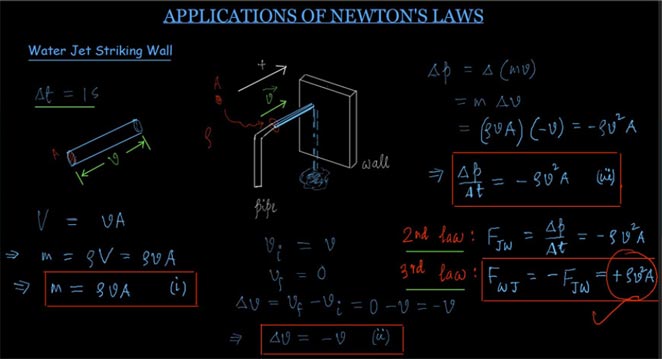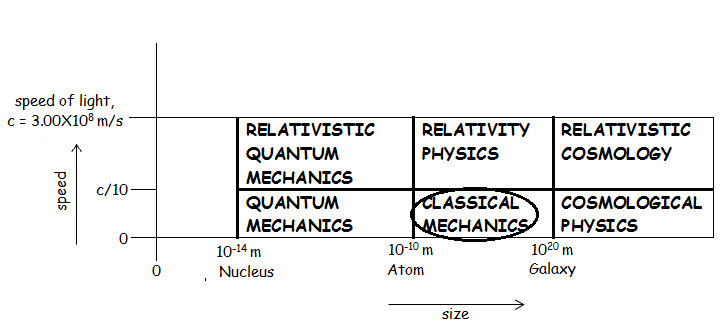Historically, the term mechanics was first used by Newton to mean the science of machines and the art of making them. Today we use the word to mean the branch of science that describes and predicts the conditions of rest or motion under the effect of a set of forces. Mechanics is indeed the grammar of Physics.
Classical mechanics, or Newtonian mechanics as it is sometimes called, is a theory of motion developed by the English physicist Sir Isaac Newton (1642 – 1727) in the 17th century. It first appeared in print in his celebrated work “Mathematical Principles of Natural Philosophy”(often referred to as simply “Principia”, borrowing the third word from its original Latin title), published by Royal Society of London in 1687.
Classical mechanics has often been viewed as a model for other so-called exact sciences. Two important features are the extensive use of mathematics in theories, and the decisive role played by experiments in generating and testing them.
The theory of classical mechanics provides us with the means to analyse and predict the motions of physical bodies over an enormous range and variety of situations, from electrons to galaxies. However, like other physical theories, classical mechanics has its limitations.
The analysis of motion at extremely high speeds requires that we modify the description of space and time according to Einstein’s Theory of Relativity. The analysis of phenomena on the atomic or subatomic scale falls within the scope of Quantum Mechanics.
Both of the latter theories were developed in the early 20th century … after a gap of more than 200 years since the advent of classical mechanics. The diagram below shows the limits of classical mechanics in tabular form.
Although, historically, classical mechanics in its present form originated with the publication of Principia, there are many unsung and little-sung heroes behind its long evolution. Let us share some tidbits on the lives and work of those great men.
Mechanics has its origins in ancient Greece, and the two most notable contributors were Aristotle (384 – 322 BC) and Archimedes (287 – 212 BC). However, be warned that many of their propositions seem out of place in the light of modern discoveries. For instance, to describe the motion of a body on the ground, Aristotle did not take into account friction. According to him, heavy objects require more force to make them move, and objects pushed with greater force move faster. Basically, he was implying F = mv, which is clearly wrong in modern terms.
Aristotle believed all matter was made up of five elements: earth, water, air, fire, and aether. The last one is a fictitious divine substance composing celestial bodies such as planets and stars.
Natural motion depends on the element concerned. Aether moves in a circle, air and fire move vertically upwards, while earth and water move vertically downwards towards their natural resting places. According to Aristotle, the speed of a body falling through a fluid can be expressed as v = cW /ρ, where c is a constant, W is body weight and ρ is fluid density.
You cannot fail to notice the implication of this formula: the speed of a falling body would become infinite in vacuum! And to avoid this unpleasant conclusion, Aristotle prophesied a vacuum is not possible.
If you are suppressing a chuckle at this point, think again without bias. He was arguably one of the first few who not only took deep interest in the natural events around him, but also attempted to explain them scientifically and penned down his thoughts/findings for contemporary and future generations. No wonder Aristotle’s writings on motion remained influential until the early modern period. And then – one fine morning in 1591 – a young mathematics professor named Galileo Galilei climbed to the top of the bell tower in Pisa with a bag of balls and demonstrated to the cheering students below the failure of Aristotle’s principle.
Incidentally, another Greek scientist – Archimedes, who was born nearly one hundred years after Aristotle – corrected the latter’s theory that bodies move towards their natural resting places. Metal boats can float if they displace enough water. Floating depends on the mass and volume of the object, and not on its elementary composition.
Talking of Archimedes, a funny story about him is in circulation for over two millennia. King Hiero of Syracuse asked Archimedes to determine whether his golden crown had some silver impurity … without, of course, damaging the crown.
While taking bath, the scientist noticed that the level of water in the tub rose as he got in, and realized that this effect could be used to determine impurity. Excited by his discovery, Archimedes forgot to dress and ran through the streets naked crying “Eureka! Eureka!” (Greek equivalent for “I have found it! “).
Well, the test was conducted successfully, the impurity in the crown was established, and most possibly the goldsmith had his head chopped. Interestingly, the story of golden crown does not appear in the known works of Archimedes. There is serious doubt about the practicality of the method, because great accuracy is required to measure the volume of displaced water.
It is more likely that Archimedes relied on his famous principle – known as Archimedes’ principle today – to determine the crown’s composition.
Archimedes made remarkable engineering inventions, often inspired by the needs of Syracuse. Once the king told him to design a multipurpose large ship, fit for both luxury travel and naval warfare. And Archimedes helped build the largest ship of ancient times, capable of carrying 600 people, complete with a garden, a gymnasium and a temple. He invented a device, aptly named as Archimedes’ Screw, to remove water accumulated in the ship’s inner hull. The same screw, with little modifications, was used to irrigate the Hanging Gardens of Babylon; it is used even today for pumping liquids and grains.
The Claw of Archimedes was a weapon that could grapple an enemy ship, lift it out of water and sink it. A television documentary made in 2005 endorsed it as a “superweapon of the ancient world” and a highly workable device.
Archimedes explained the working principle of levers and commented: “Give me a place to stand on, and I shall move the earth.” He designed elaborate block-and-tackle pulley systems so that sailors could easily lift heavy objects. He improved the accuracy of the catapult and invented an odometer that could record the distance travelled in miles.
Just like his genius was revered by his own people – the Greeks, it was loathed by his enemies – the Romans. In 212 BC, General Marcus Marcellus attacked and captured Syracuse. Archimedes was brutally killed in his study, his astronomical tools looted, and at least one of them reinstated in Marcellus’ mansion!



